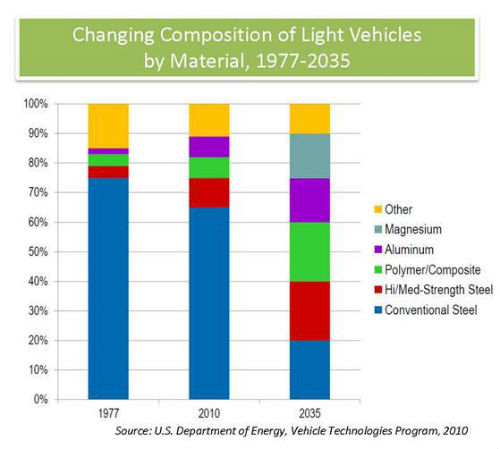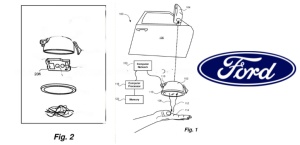By Mike Davey
Toronto, Ontario — October 15, 2015 — More composite materials, including carbon fibre, will be showing up on our roads in coming years. It’s an absolute certainty that these cars are also going to be making their way to your facility.
Dale Brosius is the Chief Commercialization Officer for the Institute for Advanced Composites Manufacturing Innovation (IACMI), a subsidiary of the University of Tennessee Research Foundation. He recently presented at the Automotive and Aeronautics Conference at JEC Forums, discussing the future of carbon fibre composites. He points to emissions legislation that essentially means vehicle manufacturers must reduce the weight of their vehicles significantly in coming years.
During his presentation, Brosius noted that every automotive manufacturer is pursuing lightweighting as a key strategy to reduce fuel consumption, regardless of the powertrain technology pathway they’re following.
The changing composition of vehicle bodies is part of the ‘technological tsunami’ impacting the collision repair industry in recent years. Aluminum grabbed headlines with the Ford F-150, but the material has both advantages and disadvantages. It’s much lighter than steel, but also more expensive. Aluminum also bulks more for its relative strength than steel does. In any case, even unprecedented use of aluminum may not allow manufacturers to hit the targets set by legislation.
That’s where carbon fibre comes in, or rather carbon fibre reinforced polymer (CFRP) composites. Solely viewed in terms of weight reduction, Brosius pointed out that CFRP blows away the competition. He noted that CFRP composites have the greatest weight reduction potential if cost and manufacturing issues can be solved.
Those cost and manufacturing issues are significant, but they’re not insurmountable. During Brosius’ presentation, he noted that IACMI’s five year goals include lowering the cost of CFRP by 25 percent, and reducing the energy used in CFRP manufacturing by 50 percent. This would help to bring CRFP into the realm of mass-market vehicles. In fact, IACMI is seeking to have adoption of carbon fibre composites in mass-produced platforms within five years. “Mass-market” in this case means at least 100,000 vehicles a year.”
 This does not seem too out of line with projections from the US Department of Energy’s Vehicle Technologies Program. In 2010, approximately 5 percent of all material used in light vehicles was polymer/composite, and aluminum was around the same percentage. High and medium strength steels composed around 10 percent of the average vehicle’s structure, with levels of conventional steel hovering around 65 percent.
This does not seem too out of line with projections from the US Department of Energy’s Vehicle Technologies Program. In 2010, approximately 5 percent of all material used in light vehicles was polymer/composite, and aluminum was around the same percentage. High and medium strength steels composed around 10 percent of the average vehicle’s structure, with levels of conventional steel hovering around 65 percent.
Turning the clock forward to 2035, the Vehicle Technologies Program predicts a very different mix of materials on the road. Conventional steel is predicted to dip down to about 20 percent, with medium and high strength steels rising to about 20 percent. Aluminum use is projected to balloon to 12 percent, or slightly more than double its use in 2010. However, polymer/composites are projected to rise to about 20 percent. This quadruples the amount used in 2010, and would see polymer/composites take an equal place with the various forms of steel.





































